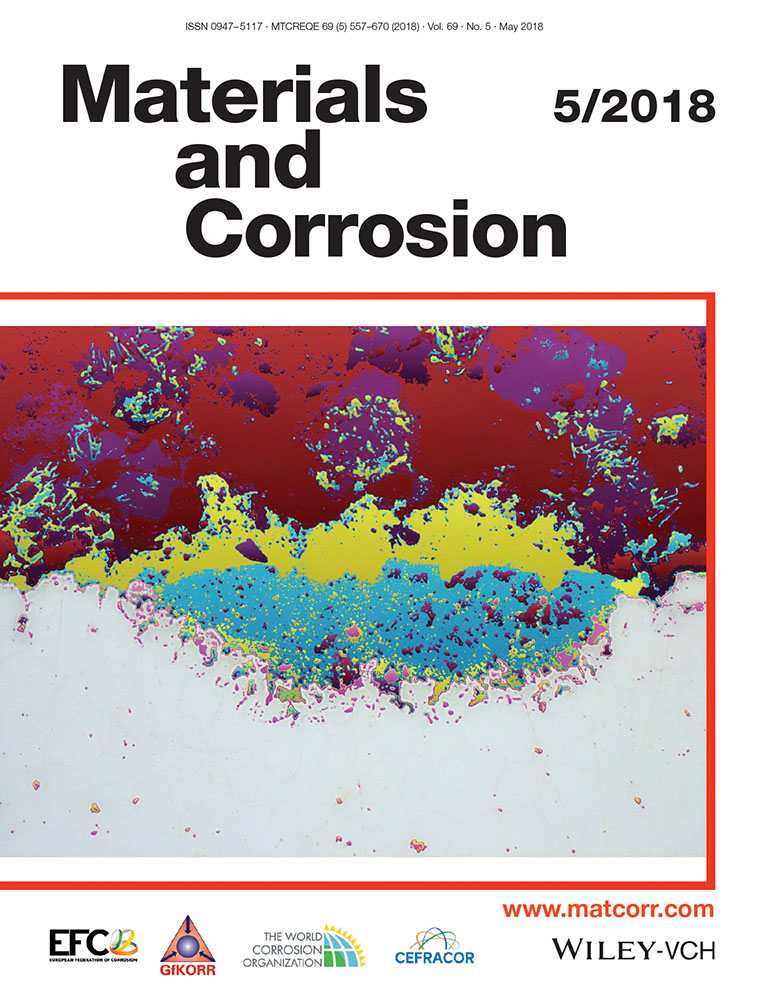Passivity and its breakdown on low temperature plasma carburized AISI 204Cu stainless steel in chloride-containing solution
Abstract
The passivity and passivity breakdown of low temperature plasma carburized AISI 204Cu stainless steel were studied in borate buffer solution (pH 8.4) in the absence and presence of 150 mM KCl, performing potentiodynamic polarization, potentiostatic transients, and electrochemical impedance spectroscopy (EIS) measurements complemented with scanning electron microscopy (SEM). In the absence of chloride ions, the surface treatment exercise a beneficial role in the passivating characteristics of AISI 204Cu. Plasma carburizing significantly modifies the electrochemical response of 204Cu steel resulting in a more stable passive film. In the presence of chloride ions, both the untreated and plasma carburized specimen experience localized corrosion (pitting). However, plasma carburizing increases the breakdown potential and the extent of passivation domain, indicating improved resistance to initiation of pitting corrosion. Furthermore, EIS measurements performed at the breakdown state evidenced higher Rct and lower depression angle values for the carburized specimen compared to the untreated alloy, confirming its better localized corrosion behavior. The high amount of interstitial carbon is believed to be responsible for the enhanced protective function of passive film which exerts an effective inhibiting action towards the localized corrosion process.




